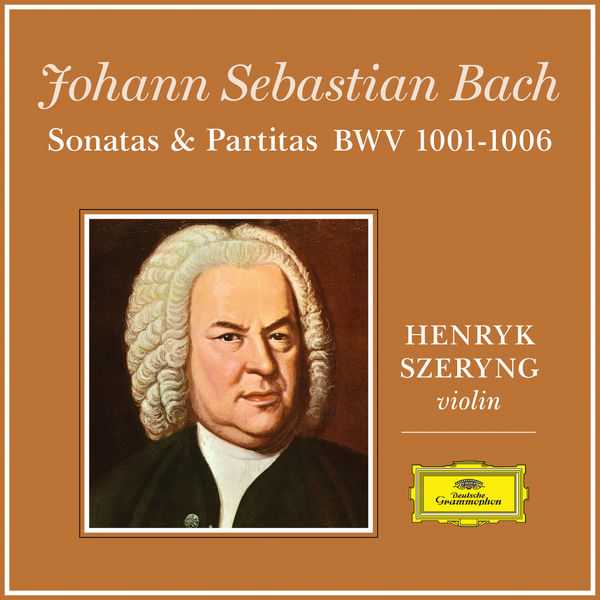

Composer: Johann Sebastian Bach
Performer: Henryk Szeryng
Format: FLAC (tracks)
Label: Deutsche Grammophon
Catalogue: 4798689
Release: 1968/2018
Size: 2.62 GB
Recovery: +3%
Scan: yes
Sonata for Violin Solo No.1 in G minor, BWV 1001
01. I. Adagio
02. II. Fuga. Allegro
03. III. Siciliana
04. IV. Presto
Partita for Violin Solo No.1 in B Minor, BWV 1002
05. Ia. Allemanda
06. Ib. Double
07. IIa. Corrente
08. IIb. Double
09. IIIa. Sarabande
10. IIIb. Double
11. IVa. Tempo di Borea
12. IVb. Double
Sonata for Violin Solo No.2 in A minor, BWV 1003
13. I. Grave
14. II. Fuga
15. III. Andante
16. IV. Allegro
Partita for Violin solo No.2 in D minor, BWV 1004
17. I. Allemande
18. II. Corrente
19. III. Sarabande
20. IV. Giga
21. V. Ciaccona
Sonata for Violin Solo No. 3 in C Major, BWV 1005
22. I. Adagio
23. II. Fuga
24. III. Largo
25. IV. Allegro assai
Partita for Violin Solo No. 3 in E Major, BWV 1006
26. I. Preludio
27. II. Loure
28. III. Gavotte en Rondeau
29. IV. Menuet I-II
30. V. Bourrée
31. VI. Gigue
Recorded in 1967, in the rather dry acoustic environment of the Vevey theatre on the Swiss bank of Lake Geneva, this reference edition of Bach’s Six Sonatas and Partitas by Henryk Szeryng benefited from the talents and the ears of the choral and orchestral conductor Vittorio Negri, who also spent several years as one of the Philips artistic directors. The two men were well-acquainted and shared a mutual respect. The duo would go on to produce other touchstone recordings for this label, which no longer exists today. With this recording, Szeryng laid down a kind of benchmark which remains an excellent approach to this demanding corpus. One could endlessly discuss the often-distant objectivity with which the violinist constructs his discourse, but we have to admire the clarity of his articulations and his serious, clear approach.
Henryk Szeryng, who had already recorded the Sonatas and Partitas previously, in 1955, impresses with his style which can be severe, even haughty, and the power of his incredibly dynamic technique. This recording remains a superb testament to the performance of one of the great violinists of the 20th Century, before the advent of the “historically researched” school of baroque music, which has radically changed the approach to this repertoire. Today, violinists have a freer, less-corseted approach, closer to the folk dances which made their mark on Bach’s music.



